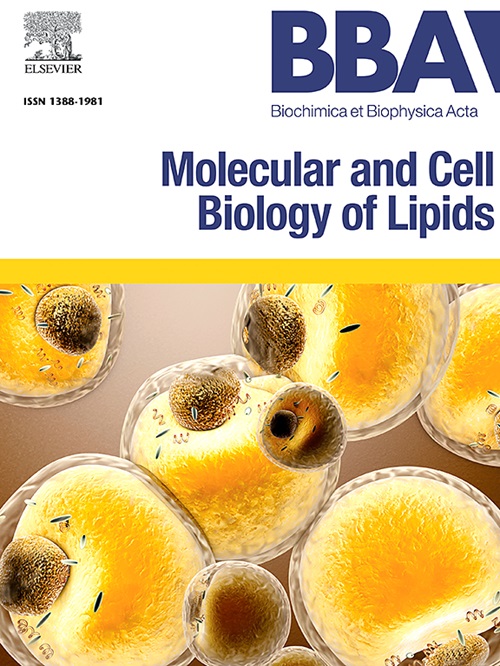Molecular mechanisms of cytochrome P450-derived epoxy-fatty acids neuroprotection
IF 3.3
2区 生物学
Q2 BIOCHEMISTRY & MOLECULAR BIOLOGY
Biochimica et biophysica acta. Molecular and cell biology of lipids
Pub Date : 2025-07-10
DOI:10.1016/j.bbalip.2025.159663
引用次数: 0
Abstract
The epoxyeicosatrienoic acids (EETs) are metabolites that result from the oxidation of the arachidonic acid by cytochrome P450 (CYP) epoxygenases. EETs are known to exert anti-inflammatory, antioxidant, vasodilatory, pro-angiogenic and anti-apoptotic actions. In the nervous system, EETs have been found to be neuroprotective in different models of neuronal damage. However, the molecular mechanisms responsible for these effects are not yet fully understood. This article seeks to review what is known about the signaling pathways involved in the EETs mediated neuroprotection. The mechanisms responsible for these effects are complex and involve several biological pathways that often crosstalk, including an inhibition of NFκB pathway, the activation of PPARα/γ nuclear receptors, and the activation of the PI3K/Akt pathway, among others. We also review what is known about the production and the biological significance of the epoxyeicosatrienoic acid ethanolamides (EET-EAs) and the epoxyeicosatrienoic acid glycerols (EET-EGs), metabolites that result from the epoxidation of the anandamide (AEA) and 2-arachidonylglycerol (2-AG) by CYP epoxygenases, which show endocannabinoid features.
细胞色素p450衍生的环氧脂肪酸神经保护的分子机制。
环氧二碳三烯酸(EETs)是花生四烯酸被细胞色素P450 (CYP)环氧合酶氧化的代谢物。已知eet具有抗炎、抗氧化、血管扩张、促血管生成和抗凋亡作用。在神经系统中,已发现eet在不同的神经元损伤模型中具有神经保护作用。然而,导致这些效应的分子机制尚未完全了解。本文旨在回顾脑电图介导的神经保护所涉及的信号通路。这些作用的机制是复杂的,涉及几种经常相互作用的生物学途径,包括NFκB途径的抑制、PPARα/γ核受体的激活和PI3K/Akt途径的激活等。我们还回顾了环氧二碳三烯酸乙醇酰胺(EET-EAs)和环氧二碳三烯酸甘油(EET-EGs)的生产和生物学意义,这些代谢产物是由CYP环氧化酶环氧化anandamide (AEA)和2-花生四烯酰基甘油(2-AG)产生的,具有内源性大麻素特征。
本文章由计算机程序翻译,如有差异,请以英文原文为准。
求助全文
约1分钟内获得全文
求助全文
来源期刊
CiteScore
11.00
自引率
2.10%
发文量
109
审稿时长
53 days
期刊介绍:
BBA Molecular and Cell Biology of Lipids publishes papers on original research dealing with novel aspects of molecular genetics related to the lipidome, the biosynthesis of lipids, the role of lipids in cells and whole organisms, the regulation of lipid metabolism and function, and lipidomics in all organisms. Manuscripts should significantly advance the understanding of the molecular mechanisms underlying biological processes in which lipids are involved. Papers detailing novel methodology must report significant biochemical, molecular, or functional insight in the area of lipids.

 求助内容:
求助内容: 应助结果提醒方式:
应助结果提醒方式:


